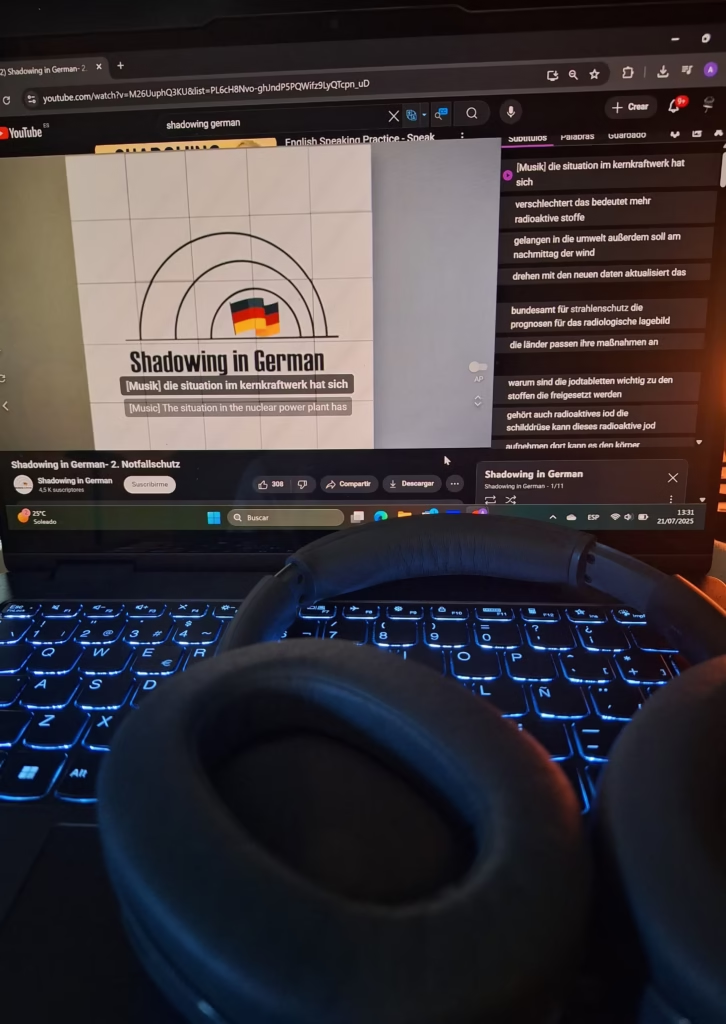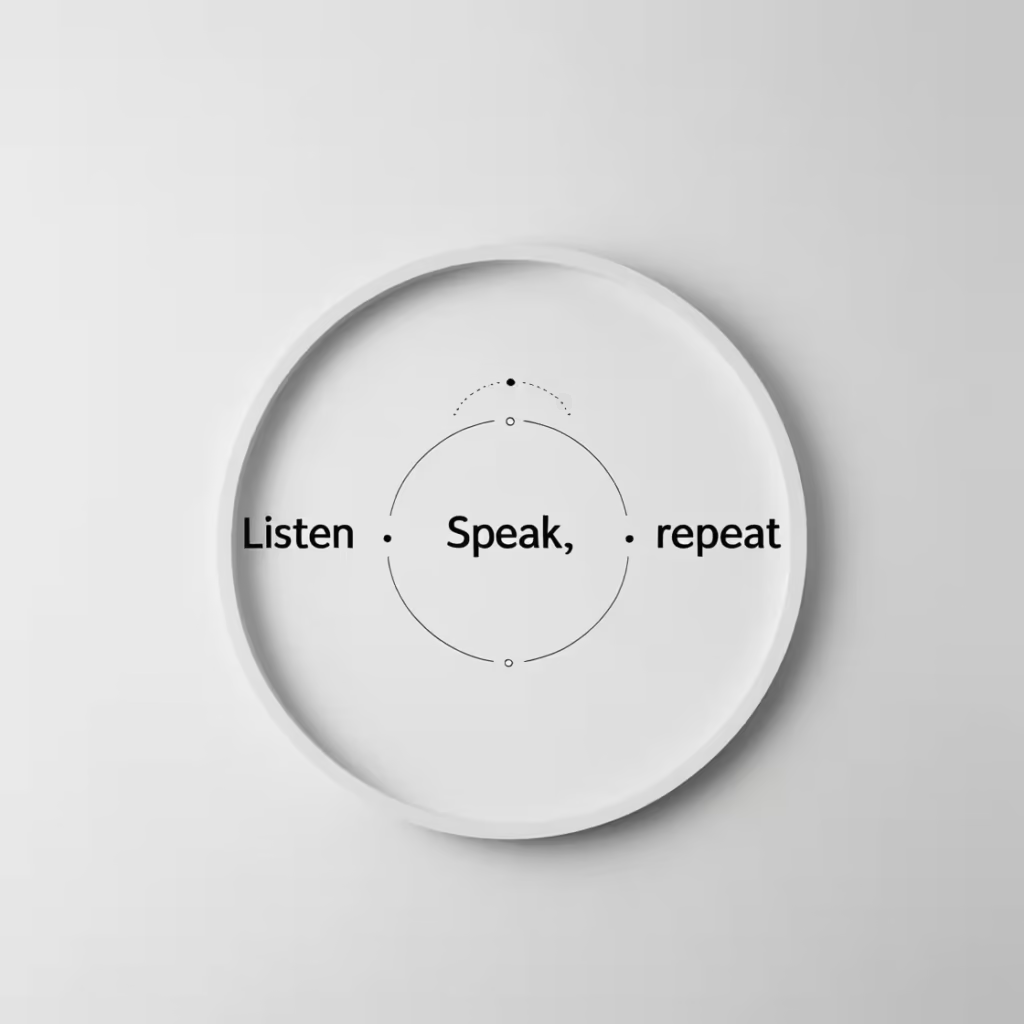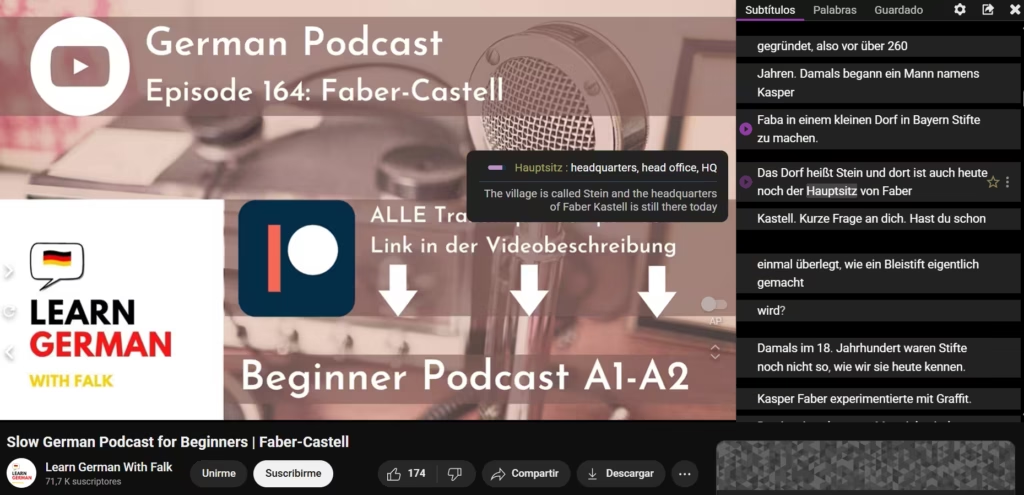How to Improve German Pronunciation with Shadowing: Step‑by‑Step Guide

Introduction
If you want to improve German pronunciation with shadowing, you’re in the right place. Shadowing is a powerful language learning technique that trains your mouth, ears, and brain to mimic native speakers’ rhythm, tone, and accent. In this step‑by‑step guide, I’ll show you exactly how to use shadowing effectively—with real audio demos—to boost your pronunciation and speaking confidence in German.
What Is Shadowing? A Proven Technique for German Pronunciation

Shadowing is a simple but highly effective method where you listen to native German speech and repeat it immediately, trying to match the speaker’s pronunciation, rhythm, and intonation as closely as possible.
Originally developed by polyglot Dr. Alexander Arguelles, shadowing helps reduce your accent, improve fluency, and build natural speaking patterns faster than traditional study methods.
By imitating German speakers out loud in real-time, you train your ears, brain, and mouth together, making your pronunciation more natural.
Why Shadowing Works: Improve German Accent and Flow
Click this image to watch how I use shadowing! Explanation is in German but you can watch the English subtitles aswell and practice your German.

Shadowing taps into how children acquire language—by mimicking what they hear. It improves:
- Pronunciation clarity
- Natural rhythm and sentence stress
- Correct intonation (voice rising and falling)
- Accent reduction
Think of it like training your speaking “muscles” to sound more native, not just memorizing words.
Key German Pronunciation Challenges Shadowing Helps You Master
German pronunciation has some unique sounds and patterns that learners often struggle with:
- The “ch” sound — as in ich [ɪç] or Buch [buːx] — which can be tricky because it doesn’t exist in many languages. Shadowing helps your mouth get used to producing this sound naturally in context.
- The “r” sound — German has a uvular “r” (guttural), different from the English rolled or tapped “r.” Shadowing trains your tongue and throat muscles to overcome this.
- Vowel length and umlauts — Distinguishing between a and ä, or long and short vowels, is important for meaning. Shadowing sharpens your ear and tongue sensitivity to these subtle differences.
- Sentence stress and intonation — German often places emphasis on the first syllable of words and has a distinct melody. Shadowing helps you internalize these patterns so your speech sounds natural.
By regularly shadowing native speakers, you train your brain and mouth to automatically reproduce these sounds and patterns, making your German pronunciation more accurate and fluent.
How to Use Shadowing for German Pronunciation (Step-by-Step)

You only need a phone and headphones to start.
1: Choose a Short Native Audio Clip (1–3 minutes)
- Podcasts: Deutsche Welle’s “Langsam gesprochene Nachrichten”
- YouTube: Easy German, Niko’s Weg
2: Listen Actively
- Listen once or twice to understand the meaning.
3: Shadow Out Loud
- Play the audio and immediately repeat each phrase, trying to copy the speed, rhythm, and tone.
- No transcript at first—focus on listening and speaking.
4: Record Yourself
- Occasionally record to compare your pronunciation with the native speaker.
5: Repeat Daily
- 10–15 minutes a day builds rapid progress.
Extra Tip: I personally use one headphone to hear myself better while shadowing. Standing up also helps boost energy and focus.
Common Shadowing Mistakes in German to Avoid
For example:
- Mispronouncing the “ch” sound — Don’t shy away from practicing this! Shadowing exposes you to many examples until it becomes natural.
- Overemphasizing English intonation patterns — German intonation is different; shadowing with real German audio will help you adjust your rhythm and melody.
- Whispering or mumbling — Be loud and clear.
- Pausing too much — Try to keep up with the natural pace.
- Using robotic AI voices — Always shadow real native speakers.
- Getting stuck on one line — Aim for flow, not perfection.
Make Shadowing a Daily Habit to Improve German Pronunciation
The key to shadowing success is daily practice:
- Shadow while walking, doing chores, or during commutes.
- Even 10–15 minutes a day creates noticeable improvement in pronunciation and confidence.
You can also follow my audio shadowing demo for German here [Insert your audio link].
FAQ: Shadowing German Pronunciation
What is the shadowing technique for German pronunciation? A: Listening to native speech and repeating it immediately to match pronunciation, rhythm, and accent.
Can beginners use it? A: Yes! Start with slow audio and short clips, like Deutsche Welle’s slow news.
How long should I practice daily? A: Just 10–15 minutes a day is enough to see solid improvement.
Will shadowing reduce my German accent? A: Absolutely. Consistent shadowing reduces foreign accents and improves natural flow.
Do I need expensive tools? A: No! All you need is headphones and native German audio (many free resources are available).
Conclusion

German pronunciation isn’t just about sounds — it’s also about rhythm and cultural nuances in speech. Shadowing helps you catch these subtle cues, making your spoken German sound more authentic and engaging to native listeners
Happy learning—and viel Erfolg beim Deutschlernen (good luck learning German)!
Additional Resources
- Deutsche Welle Langsam gesprochene Nachrichten
- Easy German YouTube Channel
- Anki Shadowing Deck for German Pronunciation
Related Posts:

Pingback: Improve Pronunciation Shadowing: Language Learning Method